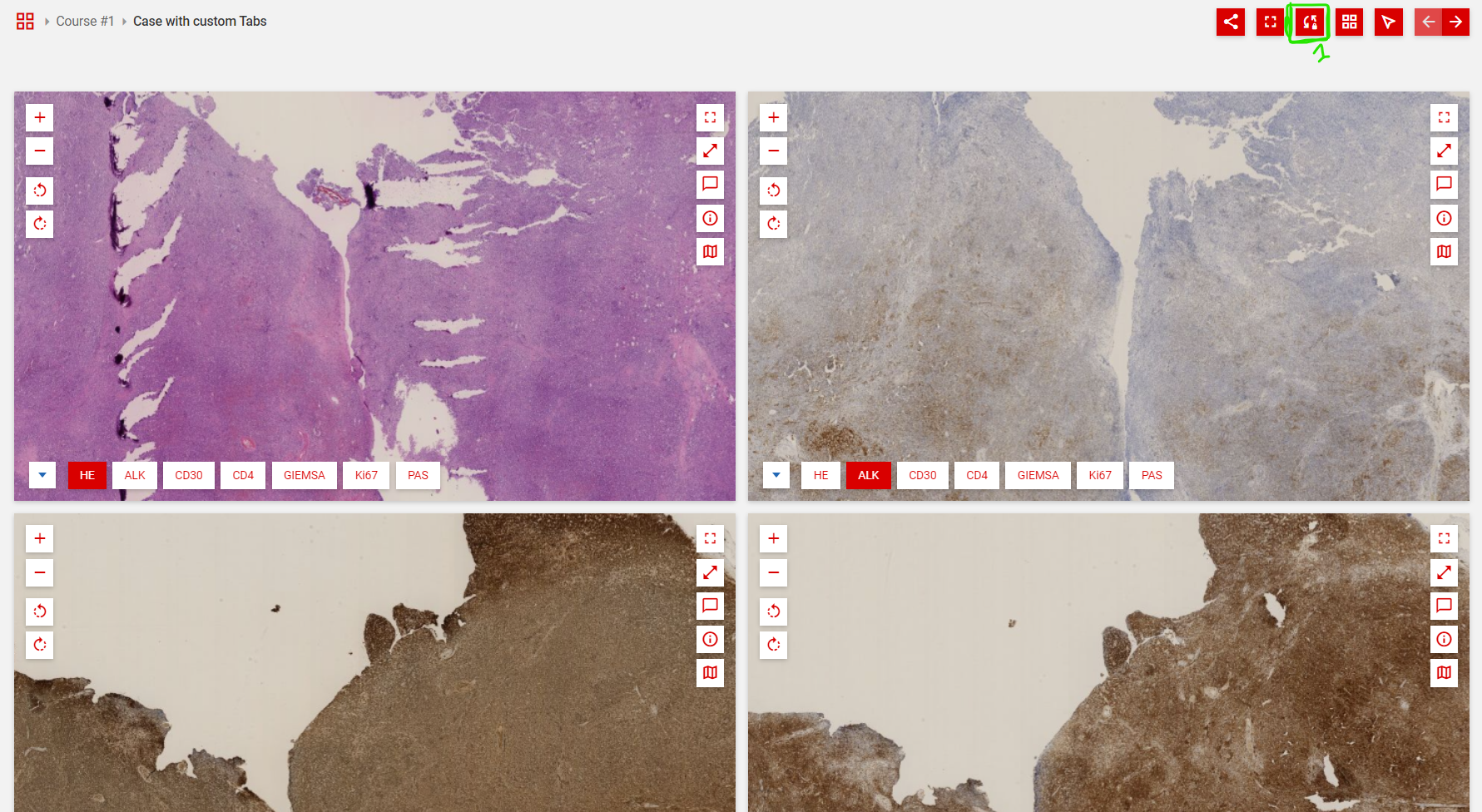Creating and editing a case in SmartZoom®
Aside from displaying single slides, you can also use the case view to display up to six slides next to each other:
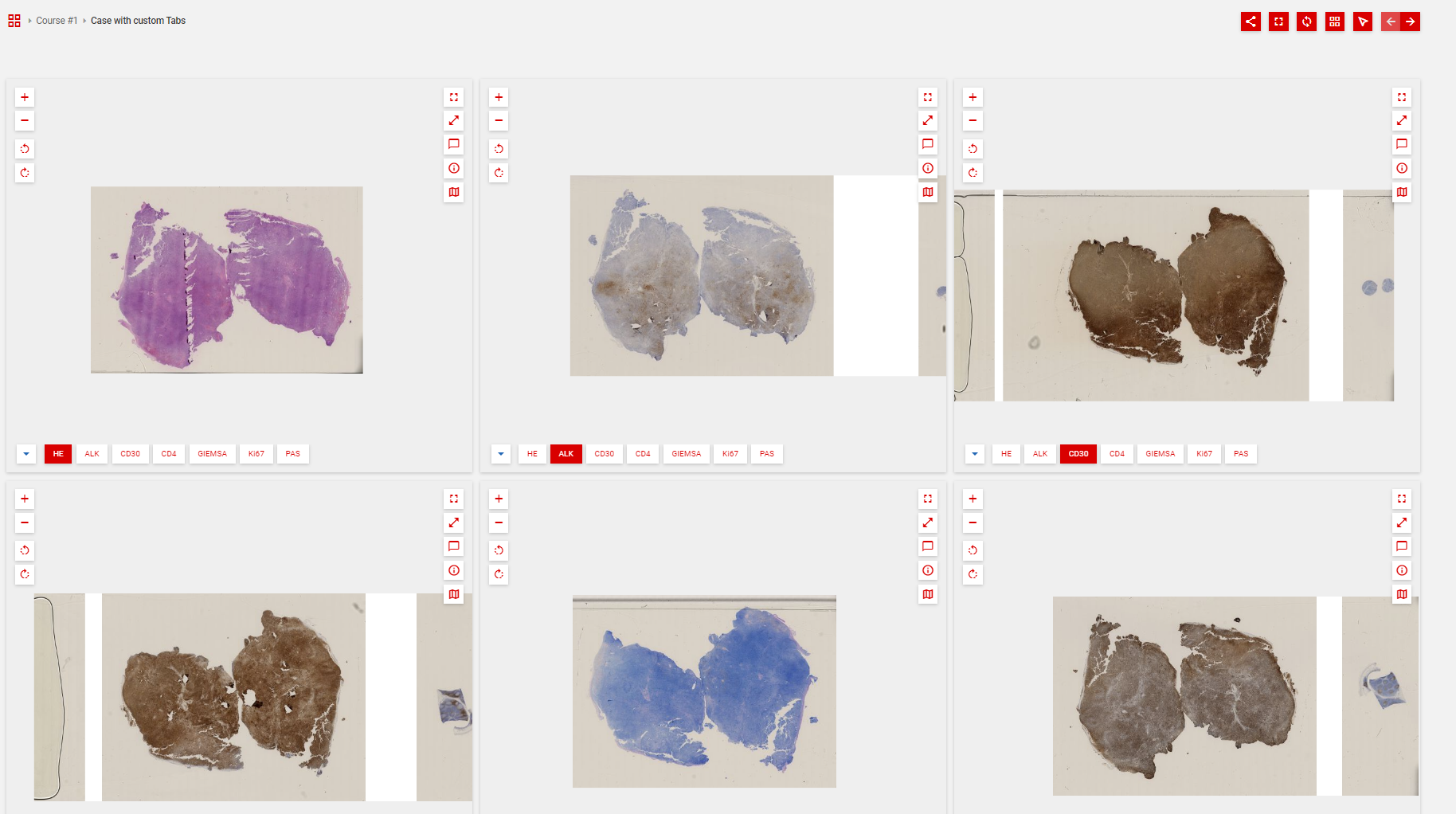
In the SlideManager navigate to the course or folder you want to add a case to and select "Add Case" , give it a title and press create.

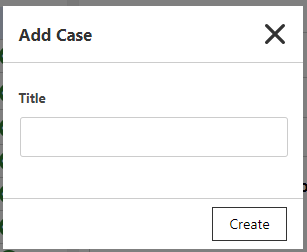
You can recognise a case by its unique icon(1), once it is created you can add all the images (3) you'd like to display in the case. You can edit the slides just like single slides, you can read more about those here: Working with a Slide

You can delete your case (3) and copy it to a different course or folder(4).
Select your case to edit it further, aside from the title (1) you can give your case a subtitle (2). You can bind the slides you added (3) and share your case (4) via link or QRC.

In the default layout(1) your case will have the option to add a description (2) a diagnosis (3) both fields are a standard WYSIWYG editor with the usual option to edit your text. You can also select to collapse the diagnosis (4), meaning the user will need to click on it to display it.
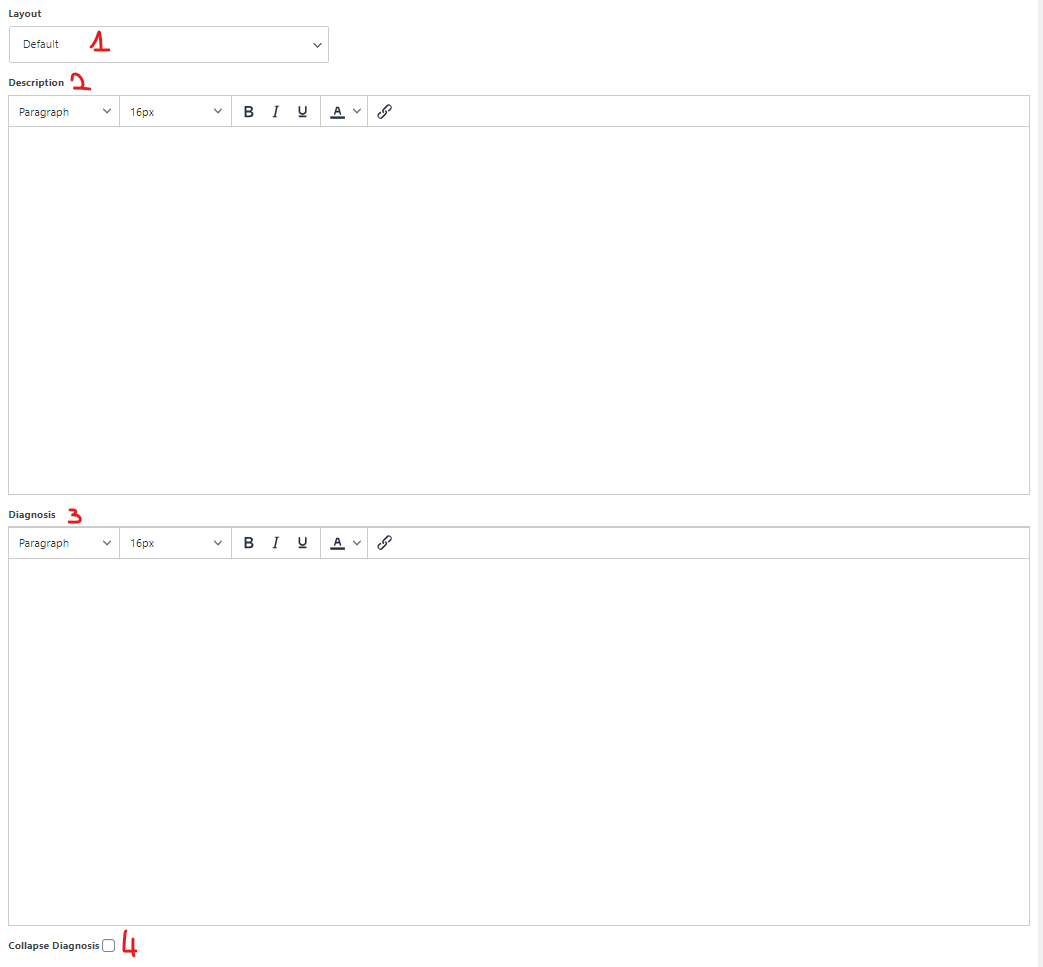
If you leave these fields empty, the case will just display the slides.

You can also opt for the "Custom tabs"(1) layout and create your own content boxes (2).
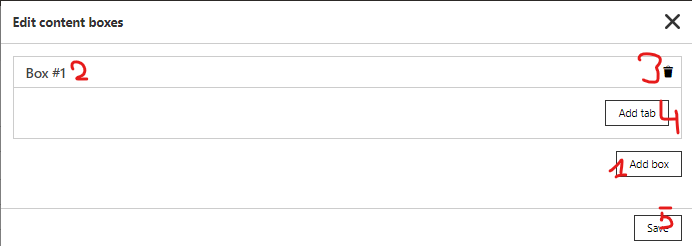
Here you can add a new box (1), the boxes are named and numbered by default, these names will not be visible. You can see your boxes (2) and add the tabs you'd like to display (4). You can remove the box (3) and save the changes you made (5).
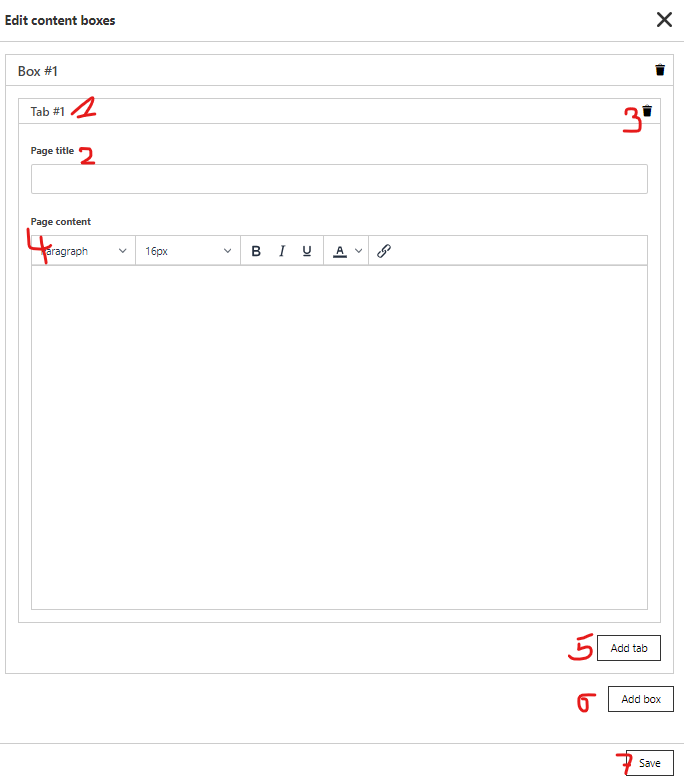
Once you added your tab (1) you can give it a title (3) and add the content (4) This is a standard WYSIWYG editor with the usual option to edit your text. Remove the tab (3) or add a new one (5).
You can also add another box (6) and always save the changes you made (7).
This is how the custom tabs will look within the case:

If you want to f.e. display different standings of the same slide and would like them to be synchronised you can bind your slides.

You will see all the slides in the case and their names (1), each window can be navigated as usual. You can rotate the slides if necessary(2). Once you've moved the slide into position, you can set the binding points (3).
Select the corresponding point in each slide (3a), once you've finished the binding, a pin will be set in the middle of the area you selected (3b). Changes will be saved automatically.
You can unbind all slides if you need to(4). If you wish to rebind one slide you can just click again on bind(3) and go though all the steps.
In the front end, the case will then be locked (1) and the slides will move in tandem.
